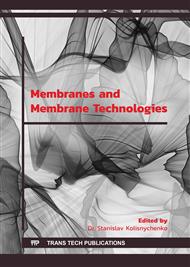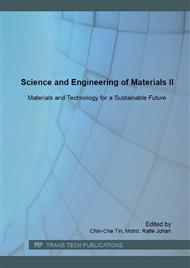p.230
p.235
p.243
p.250
p.255
p.260
p.265
p.270
p.275
The Progress of Polymeric Membrane Separation Technique in O2/N2 Separation
Abstract:
The oxygen air production are generally be achieved by pressure swing adsorption (PSA) and cryogenic distillation. Both of the techniques are able to produce high purity oxygen level which is more than 95% with a production volume of 20 – 300 tons per day. These techniques however required high energy consumption and with the rising cost of energy, membrane separation is a good option as it require relatively low energy requirement. Membrane separation technique is an emerging technique which garners the interest from academia and industry from last decade as an alternative method to produce oxygen enriched air. To date, the commercially available and research institution self-fabricated polymeric membrane are unable to produce an economically viable membrane with high permeability and selectivity in a large scale production relative to the conventional method. In this works, the progress of the application of polymeric in O2/N2 separation which including the recent developed of self fabricated polymeric membrane and the aspect of operation parameter is discussed. Finally, the paper also intends to present a brief overview of the development of membrane separation technique in O2/N2 separation in addressing the strategies and improvement in the fulfillment of industrial application interest.
Info:
Periodical:
Pages:
255-259
Citation:
Online since:
July 2016
Authors:
Keywords:
Price:
Сopyright:
© 2016 Trans Tech Publications Ltd. All Rights Reserved
Share:
Citation:



